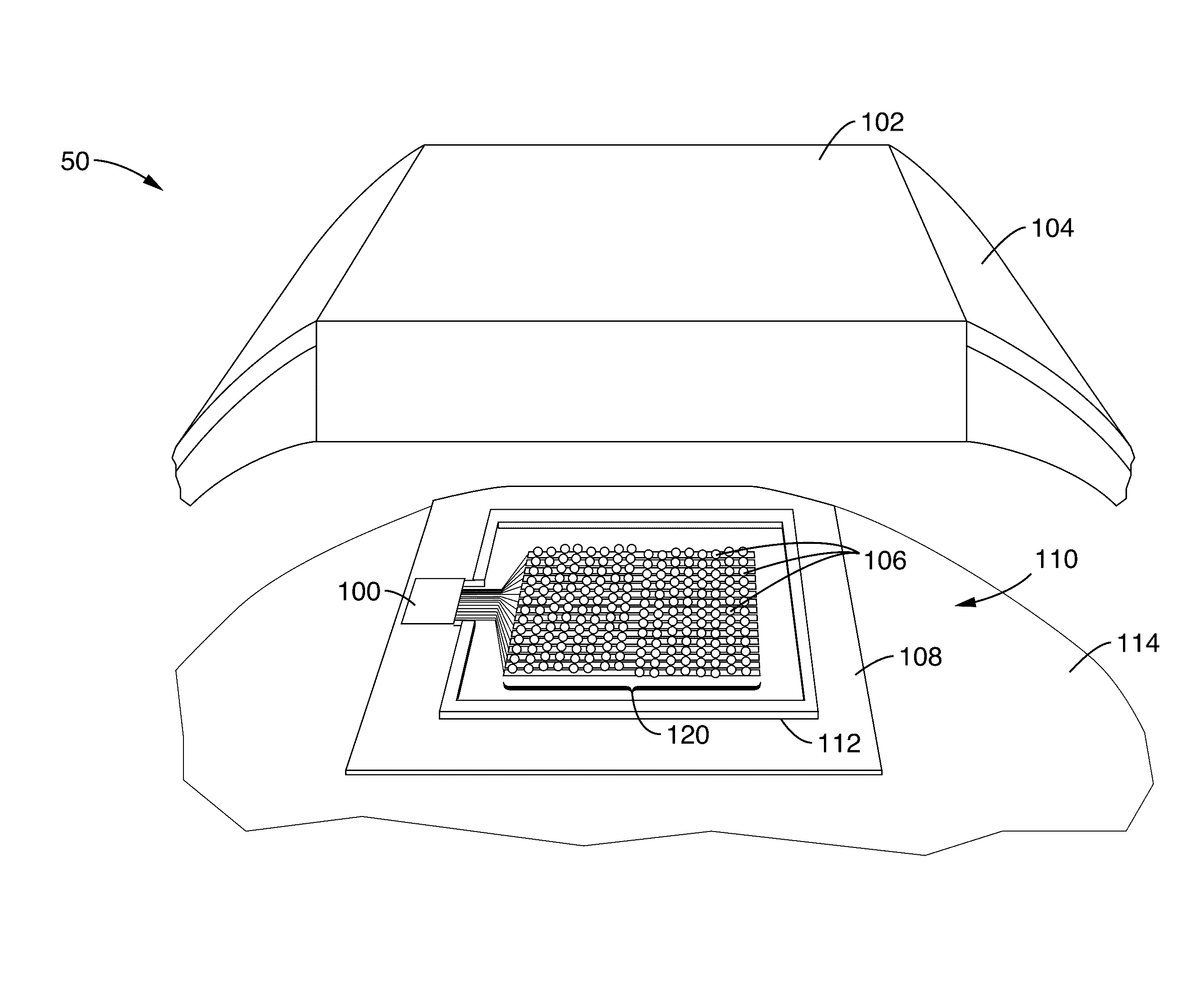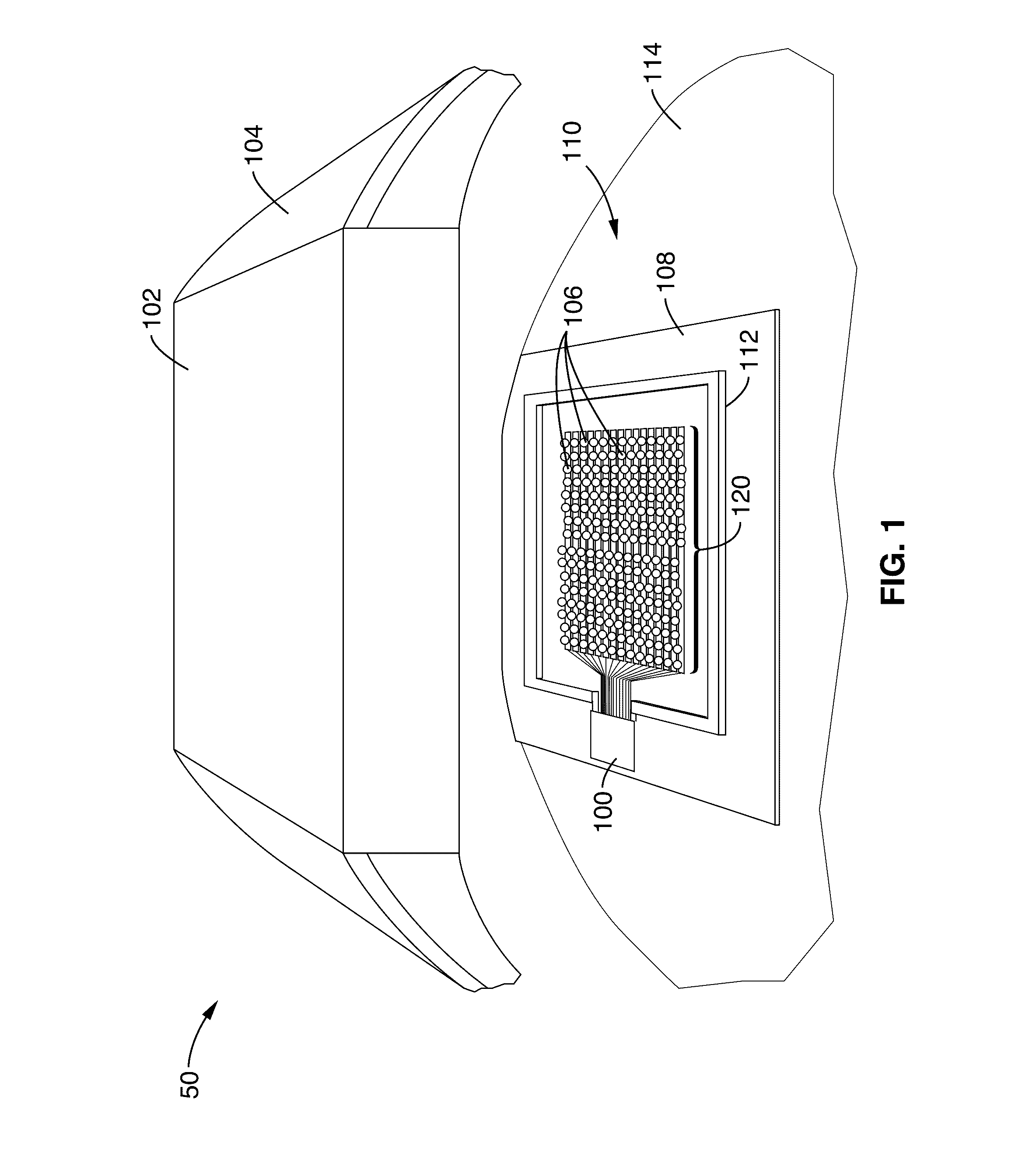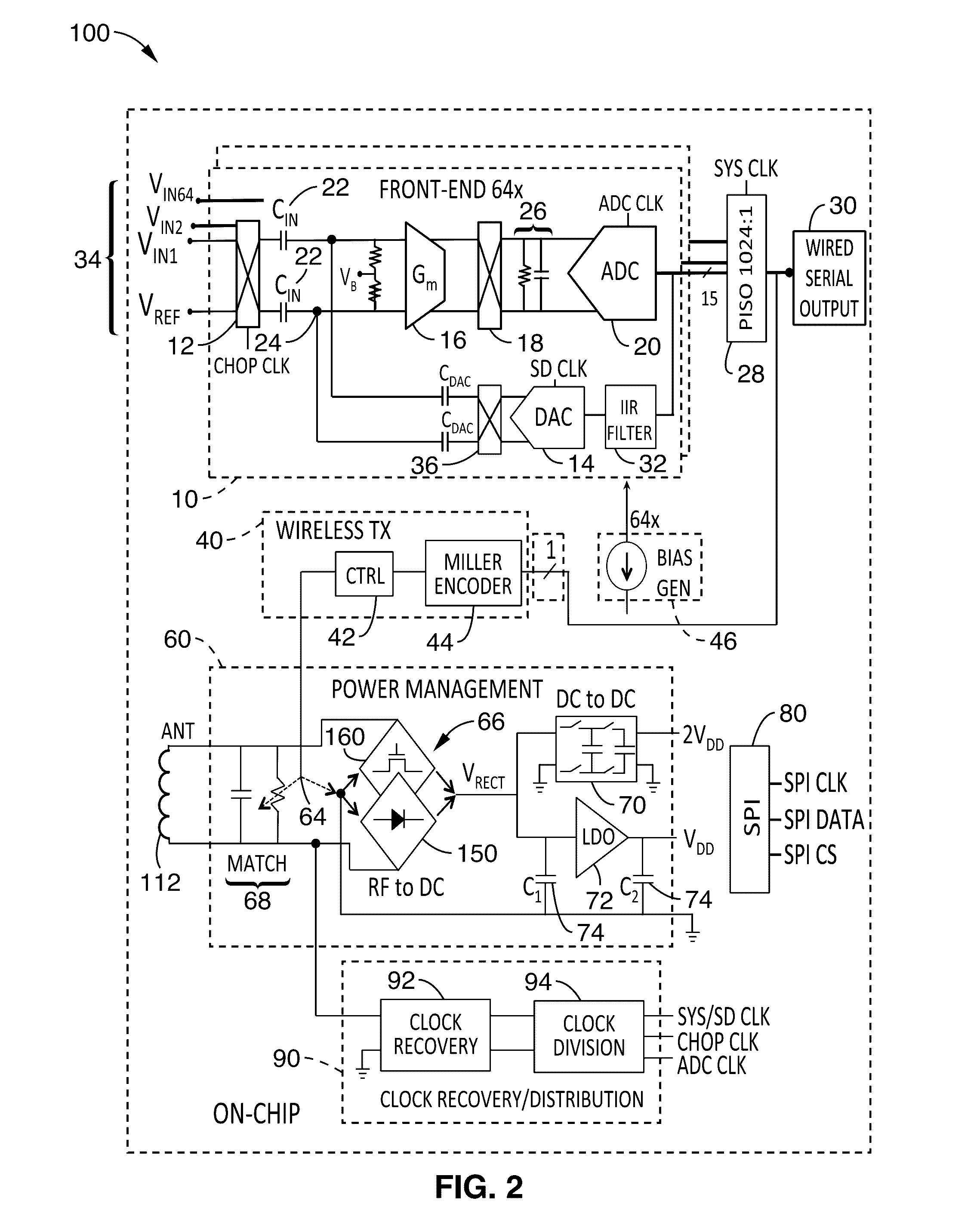Wireless high-density micro-electrocorticographic device
- Summary
- Abstract
- Description
- Claims
- Application Information
AI Technical Summary
Benefits of technology
Problems solved by technology
Method used
Image
Examples
Embodiment Construction
[0032]FIG. 1 shows a schematic system view of the implantable ECoG microsystem 50 in accordance with the present description. Microsystem 50 comprises an implant110 comprising an ECoG grid 120 for neural recordings and control circuitry 100 in the form of an IC configured to interface with and control ECoG grid 120. Implant is shown disposed on cortical surface 114 of the brain, with skull, skin, and intervening tissues between implant and external reader 102 are specifically not shown in FIG. 1 for clarity.
[0033]ECoG grid 120 comprises micro-fabricated array of electrodes 106 disposed on a flexible substrate 108, each electrode having sub-mm resolution and configured to acquire and measure signals associated with brain activity.
[0034]In a preferred embodiment, entire grid 120 is less than 10 μm thick and sufficiently flexible to conform to the highly folded cortical surface. In one exemplary configuration, the ECoG grid 120 comprises a 4 mm×4 mm, 64-channel array (e.g. 8×8 pattern ...
PUM
 Login to View More
Login to View More Abstract
Description
Claims
Application Information
 Login to View More
Login to View More - R&D
- Intellectual Property
- Life Sciences
- Materials
- Tech Scout
- Unparalleled Data Quality
- Higher Quality Content
- 60% Fewer Hallucinations
Browse by: Latest US Patents, China's latest patents, Technical Efficacy Thesaurus, Application Domain, Technology Topic, Popular Technical Reports.
© 2025 PatSnap. All rights reserved.Legal|Privacy policy|Modern Slavery Act Transparency Statement|Sitemap|About US| Contact US: help@patsnap.com



